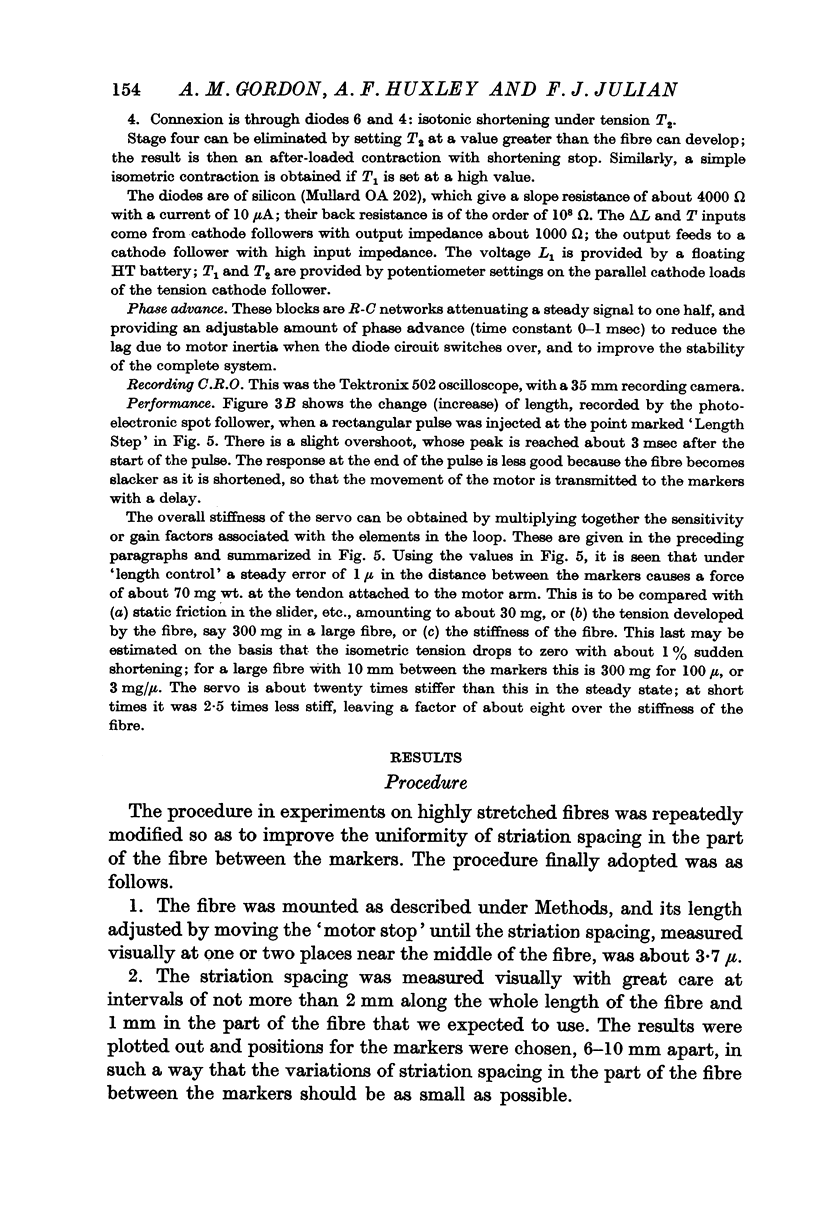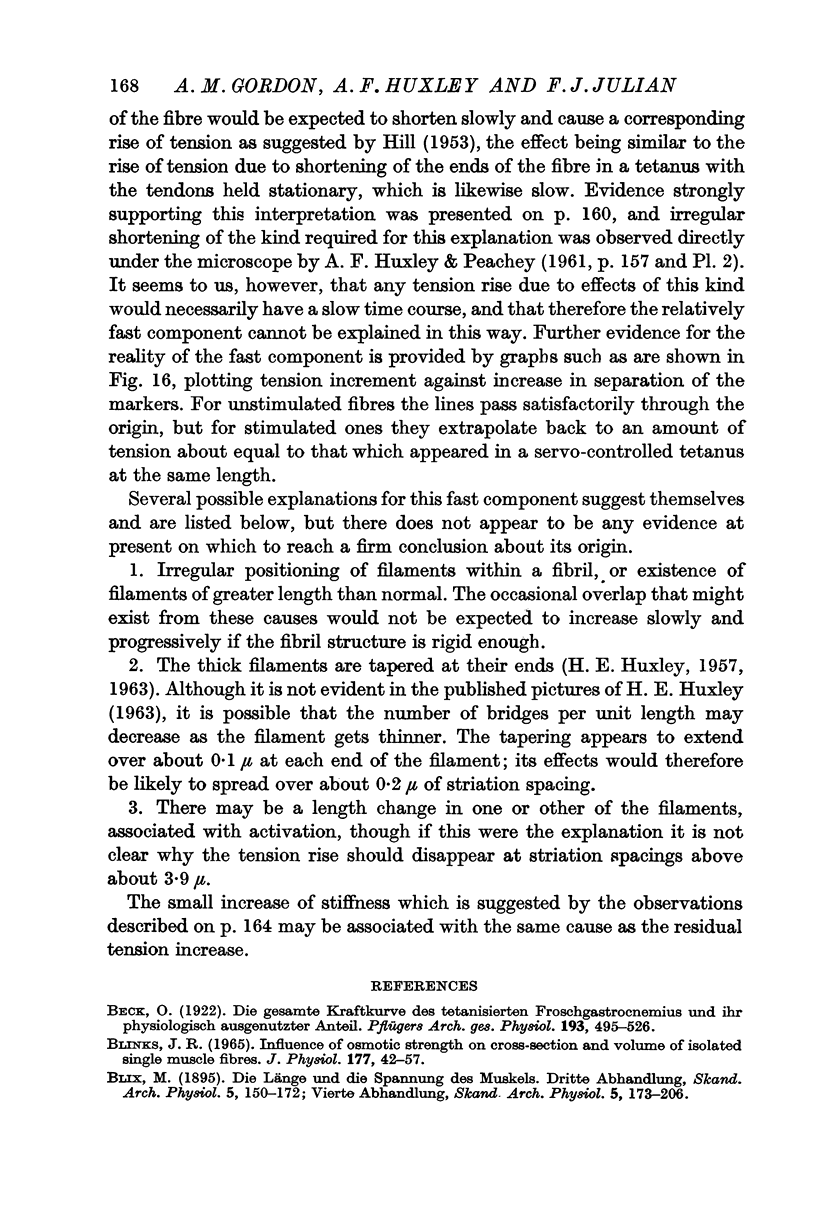Abstract
1. An apparatus is described by which the length of a selected part of an isolated muscle fibre can be held constant, giving isometric conditions, or alternatively its length can be measured while tension is held constant (isotonic). Control can be switched between length and tension so as to carry out afterloaded contractions with a shortening stop.
2. When a part of a fibre with uniform striation spacing is stretched so far that there is presumably no overlap of filaments, the tension developed during an isometric tetanus with this apparatus is very small (not more than 3-5% of the tension developed at optimum length).
3. If the tendon ends are held stationary, a fibre with the same initial length develops a large amount of tension (order of 30-40% of tension at optimum length) with a slow time course. This additional tension is due to shortening of the end parts of the fibre, where the striation spacing is smaller and overlap of filaments still exists.
4. The resistance to elongation of a part of a fibre where there is no overlap is only slightly increased on stimulation.
5. To a first approximation, the results are in good agreement with expectations based on the sliding filament theory. The development of detectable amounts of tension, and of a slight increase of stiffness, on stimulation, are however not expected on the simplest form of this theory; possible explanations are discussed.
Full text
PDF


























Images in this article
Selected References
These references are in PubMed. This may not be the complete list of references from this article.
- BLINKS J. R. INFLUENCE OF OSMOTIC STRENGTH ON CROSS-SECTION AND VOLUME OF ISOLATED SINGLE MUSCLE FIBRES. J Physiol. 1965 Mar;177:42–57. doi: 10.1113/jphysiol.1965.sp007574. [DOI] [PMC free article] [PubMed] [Google Scholar]
- CARLSEN F., KNAPPEIS G. G., BUCHTHAL F. Ultrastructure of the resting and contracted striated muscle fiber at different degrees of stretch. J Biophys Biochem Cytol. 1961 Oct;11:95–117. doi: 10.1083/jcb.11.1.95. [DOI] [PMC free article] [PubMed] [Google Scholar]
- HUXLEY A. F., NIEDERGERKE R. Structural changes in muscle during contraction; interference microscopy of living muscle fibres. Nature. 1954 May 22;173(4412):971–973. doi: 10.1038/173971a0. [DOI] [PubMed] [Google Scholar]
- HUXLEY A. F., PEACHEY L. D. The maximum length for contraction in vertebrate straiated muscle. J Physiol. 1961 Apr;156:150–165. doi: 10.1113/jphysiol.1961.sp006665. [DOI] [PMC free article] [PubMed] [Google Scholar]
- HUXLEY H. E. The double array of filaments in cross-striated muscle. J Biophys Biochem Cytol. 1957 Sep 25;3(5):631–648. doi: 10.1083/jcb.3.5.631. [DOI] [PMC free article] [PubMed] [Google Scholar]
- PAGE S. G., HUXLEY H. E. FILAMENT LENGTHS IN STRIATED MUSCLE. J Cell Biol. 1963 Nov;19:369–390. doi: 10.1083/jcb.19.2.369. [DOI] [PMC free article] [PubMed] [Google Scholar]
- PODOLSKY R. J. THE MAXIMUM SARCOMERE LENGTH FOR CONTRACTION OF ISOLATED MYOFIBRILS. J Physiol. 1964 Jan;170:110–123. doi: 10.1113/jphysiol.1964.sp007317. [DOI] [PMC free article] [PubMed] [Google Scholar]



